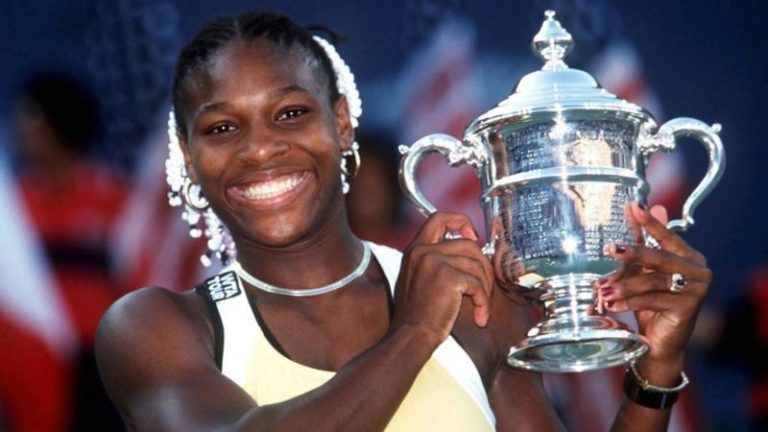SERENA WILLIAMS:
TENNIS' G.O.A.T.

MICHELE J MARTIN
Serena Williams and her equally famous sister Venus were homeschooled by their parents, Oracene Price and Richard Williams. Their parents also acted as their primary tennis coaches after showing an interest and talent in the game. While Richard and Oracene may have received criticism for this decision at the time, clearly, the Williams family knew what they were doing.
Born in Michigan, Serena, her older sister Venus, and their other siblings moved to Compton, California, when she was quite young. She was four years old when she started to show a real interest in playing tennis, so her parents began coaching her. When she was 9-years old, they would move again, to West Palm Beach. Serena was ranked number one among under-10 players in Florida in less than a year.
However, Richard soon took his daughters off the circuit, partially due to the rising racism they were experiencing and because he wanted his daughters to enjoy some of their childhood without the pressure of tournaments. He had hoped that Serena would wait until she was 16 before she began participating in professional matches. Serena had other ideas, making her pro debut at 13-years old, playing at the Bell Challenge in Quebec City. She used a wild card entry to get around age restrictions, allowing her to play. She won two games but was out in the first round of qualifying.
Serena Williams began 1997 ranked No. 304 in women's singles tennis. By the end of the year, she was ranked No. 99. Her ascent continued, and by the end of 1998, she was 16-years old and No. 20. The next year she won her first professional singles title in the final of the Open Gaz de France in Paris. Just over two months later, she made her top-10 debut, at No. 9. Serena ended 1999 ranked No. 4 — it was only her second full year on the main tour.

"The success of every woman should be the inspiration to another. We should raise each other up. Make sure you're very courageous: be strong, be extremely kind, and above all be humble."
Injuries would slow her down for the next two years, with her ranking slipping to No. 6, however by 2002, she was back on the court full force. Quickly she rebounded and reached No. 2 ... second to her sister Venus who held the No. 1 ranking for women's singles.
The sisters would go head to head in the women's singles event at the 2002 Wimbledon Championships. Serena beat her sister without dropping a set and won her first Wimbledon title. That victory also earned her the world No. 1 ranking for the first time, dethroning her sister. She became only the third Black American woman to hold that ranking. To put this in perspective, Serena was 20-years old when she became the No. 1 women's tennis player in the world.
In 2019 Tennis.com named Serena Williams The Women's Player of the Decade. We could argue that she earned The PLAYER of the Decade, regardless of her gender. Two years earlier, Williams became the first player, male or female, to win 80+ matches at 3 of the 4 Grand Slam events. Currently, she has the 4th highest career earnings of any tennis player, male and female. Serena is also the highest-earning female athlete of all-time across all sports. She has earned her place in history.
Serena Williams has set many historical firsts, such as becoming the first Black American to win the Australian Open and the first woman to win 60+ career matches in all four Grand Slams in the Open Era.
She has won so many matches and set so many records that it is easier to include a link link rather than fill pages with her many wins. To fully appreciate her athleticism and talent, I ask that you click that link; it is truly amazing.
Serena William's vocal style is open and robust. Deep warm tones, she speaks like she plays — powerfully. She speaks with conviction, and her voice commands attention and trust, regardless of what she is saying.
I wish I could choose a digital voice for my smart devices with voice characteristics similar to Serena's. How motivating would THAT be?!
Unfortunately, her vocal style has NOT been represented in the digital voices currently dominating the markets. But imagine the possibilities if the world of digital voice matched the world of human voice. If it was as dynamic and expressive? Guess what; digital voice can be all that — learn more about AI-Voice.

Armor voices are defined as Loud, Deep, Modal, and Nasal. Learn more about the unique characteristics that make up our voices and voice types here: VOCALiD Voice Types.
This is the twelfth in our Iconic Black Voices series. Make sure to come back to our blog every day this month as we highlight more iconic Black voices in celebration of Black History Month.
Spread the word
Facebook
Twitter
LinkedIn
Pinterest